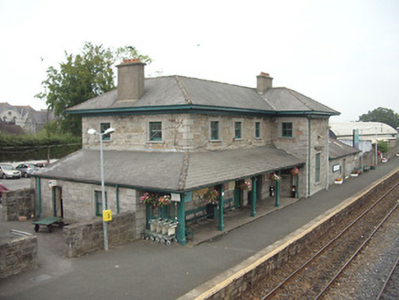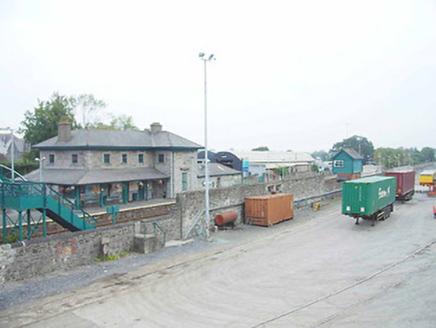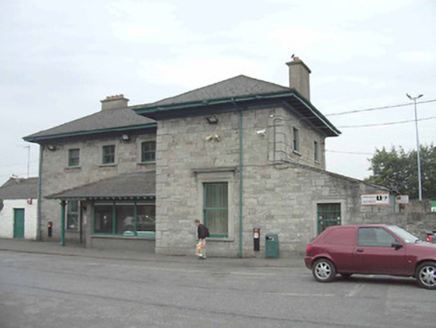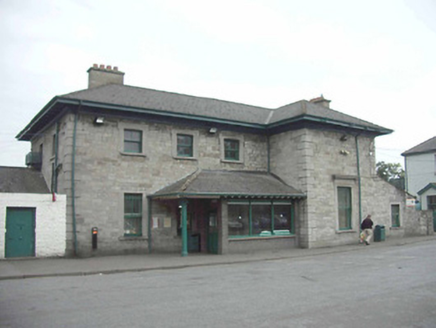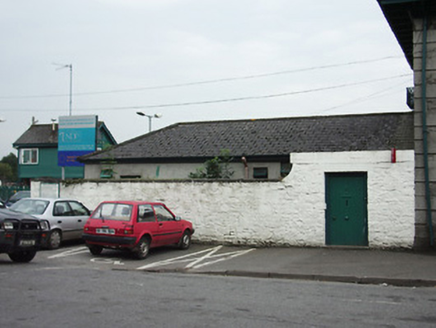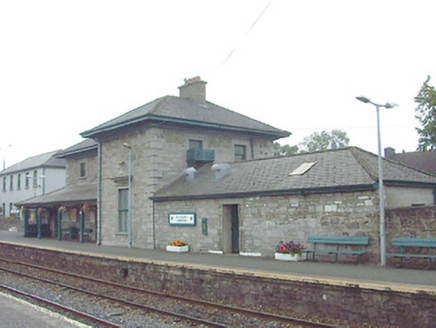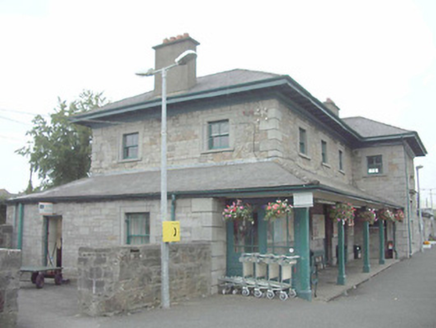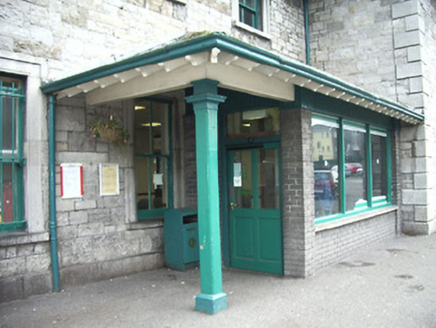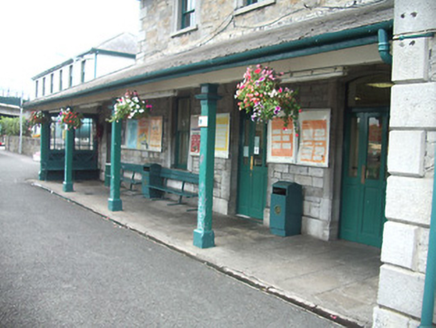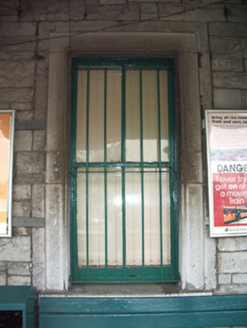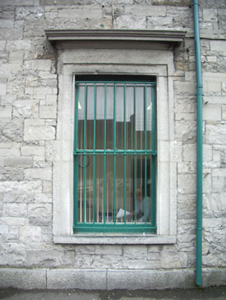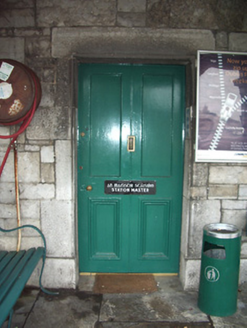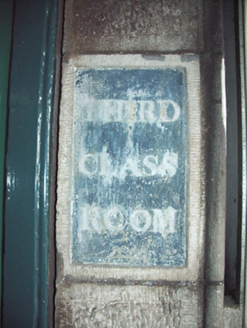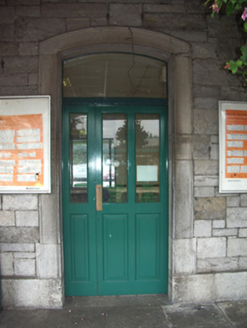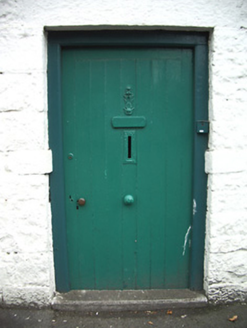Survey Data
Reg No
13004044
Rating
Regional
Categories of Special Interest
Architectural, Artistic, Social
Original Use
Railway station
In Use As
Railway station
Date
1850 - 1860
Coordinates
213515, 274963
Date Recorded
01/09/2005
Date Updated
--/--/--
Description
Detached four-bay two-storey railway station, built c. 1855 with projecting end bay to north and south elevations. Single-storey annexes to east and west, shelter to south and late-twentieth century entrance porch to north. Hipped and lean-to slate and artificial slate roofs, skirt roof to shelter and west elevation annex. Overhanging eaves with moulded eaves course, rendered chimneystacks and cast-iron rainwater goods. Snecked stone and random rubble stone walls with dressed limestone quoins and tooled limestone plinth. Square-headed window openings with tooled limestone surrounds some having cornices, two-over-two pane timber sliding sash and replacement uPVC windows. Square- and segmental-headed entrance openings some with tooled limestone surrounds, replacement glazed timber panelled and timber battened doors. Automatic main entrance door. Cast-iron window box to upper floor window on east elevation. Shelter to south elevation with stone flagged pavement, chamfered timber posts and timber boarded ceiling. Glazed and timber panelled screen to west elevation of screen with geometric glazing bars. Random rubble stone boundary walls. Situated to the north platform of the Sligo to Dublin railway line.
Appraisal
This Victorian railway station retains its early form, character and much of its early fabric. The fine limestone masonry and attention to detail is typical of Victorian railway architecture. It was originally built by the Midland and Great Western Railway Company in 1855 to serve the Mullingar to Sligo line. It was probably built to designs by George Wilkinson (1814 -1890), a noted architect of his day, who also completed the designs for a number of other railway stations for The Midland and Great Western Railway Company (on the Mullingar to Longford and the Inny Junction to Cavan lines) at this time. This building is very similar in style to the railway stations at Dromod, County Leitrim (30818010), and at Edgeworthstown, County Longford (13309002). It forms the centrepiece of a group of structures associated with Longford Town Railway Station, along with the footbridge (13004046), the signal box (13008008), the iron crane (13008005) and the goods shed (13004150). It remains an important component of the architectural and industrial heritage of Longford Town, and of the social and economic history of County Longford. Magistrate and Grand Juror of this county

